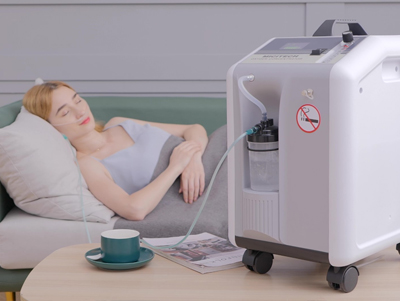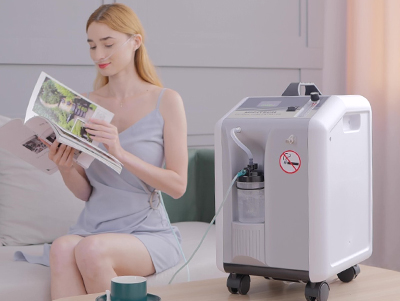07 Apr 2023
An oxygen concentrator is a medical device used to provide oxygen therapy to patients with respiratory problems. It works by taking in ambient air and separating oxygen from other gases using a specialized filtering system. The resulting oxygen is then delivered to the patient through a nasal cannula or oxygen mask. In this article, we will discuss the operation of an oxygen concentrator in detail.
An oxygen concentrator operates on the principle of pressure swing adsorption (PSA). It consists of several components, including a compressor, a molecular sieve bed, and a control system. The compressor draws in ambient air and compresses it to a pressure of around 20 pounds per square inch (psi). The compressed air then flows through a molecular sieve bed, which is a container filled with zeolite pellets.
Zeolite is a naturally occurring mineral that has a unique property of selectively adsorbing nitrogen molecules from air. As the compressed air passes through the molecular sieve bed, nitrogen molecules are adsorbed by the zeolite pellets, leaving behind oxygen-rich air. The purified oxygen is then collected and delivered to the patient through a tubing system.

The control system of an oxygen concentrator monitors and regulates the flow of air and oxygen. It also maintains the pressure and purity of the oxygen by adjusting the rate of airflow and the cycle time of the PSA process.
Components of an oxygen concentrator
Compressor: The compressor is the heart of the oxygen concentrator. It is responsible for drawing in ambient air and compressing it to the required pressure.
Molecular sieve bed: The molecular sieve bed is a container filled with zeolite pellets. The compressed air flows through the bed, and nitrogen molecules are adsorbed by the zeolite pellets, leaving behind oxygen-rich air.
Flow meter: The flow meter is a device that measures the rate of oxygen flow from the concentrator. It is essential to ensure that the patient is receiving the correct amount of oxygen.
Nasal cannula or oxygen mask: The nasal cannula or oxygen mask is the delivery system that delivers the purified oxygen to the patient. The cannula is a small, flexible tube that fits into the patient's nostrils, while the mask covers the patient's mouth and nose.

Advantages of using an oxygen concentrator
Cost-effective: Oxygen concentrators are more cost-effective than traditional oxygen cylinders. They do not require refilling, and they have a longer lifespan.
Portable: Oxygen concentrators are portable and can be easily moved from one place to another. They are ideal for patients who need oxygen therapy while on the go.
Continuous oxygen supply: Oxygen concentrators can provide a continuous supply of oxygen, unlike oxygen cylinders, which need to be replaced when they run out.
Conclusion
An oxygen concentrator is a medical device that provides oxygen therapy to patients with respiratory problems. It operates on the principle of pressure swing adsorption (PSA) and consists of a compressor, a molecular sieve bed, and a control system. The device is cost-effective, portable, and provides a continuous supply of oxygen to the patient. If you are considering purchasing an oxygen concentrator, it is essential to consult with your doctor or healthcare provider to determine if it is suitable for your needs.
Keywords: oxygen concentrator
Originally published 07 Apr 2023, updated 07 Apr 2023.